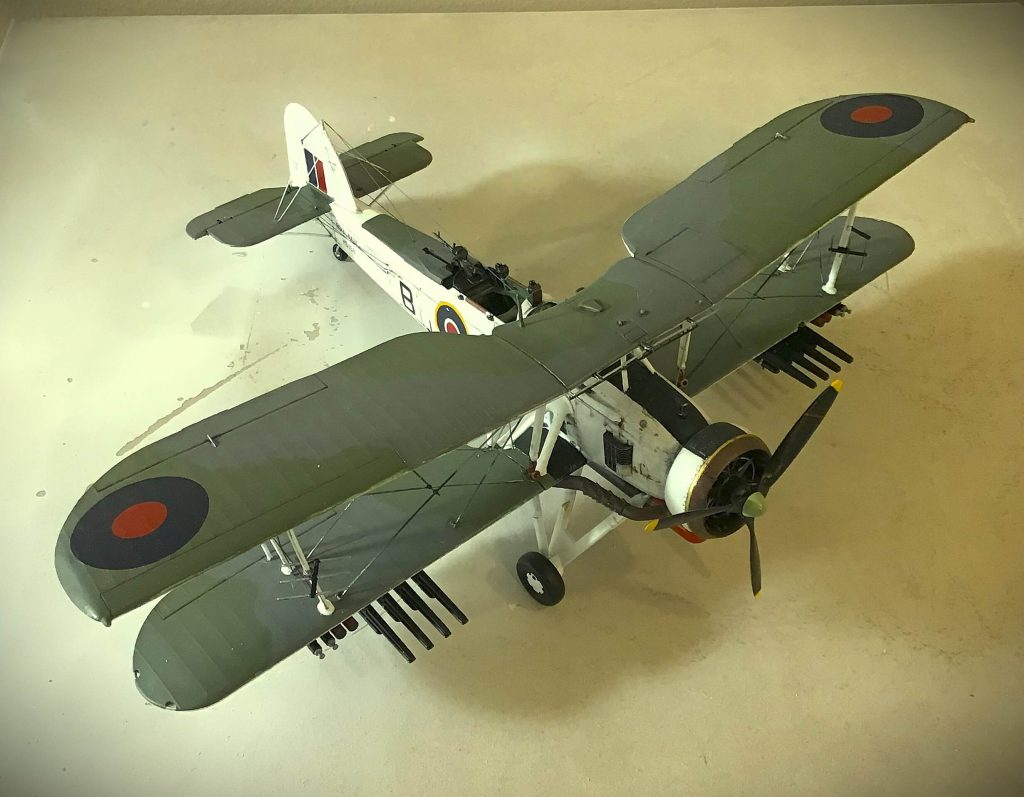Fairey Aviation Company were very much hooked on the biplane design well into the 1940’s. The Swordfish was perhaps their most recognised and revered.
The Swordfish was designed primarily as a torpedo bomber with a crew of three in tandem along the fuselage in two separate compartments. It was a swept wing, single engine tractor biplane fighter/torpedo bomber designed for carrier-borne operations as well as land based Coastal Command units. It served with RAF squadrons as well as FAA squadrons during its service. It quickly became a legend in its own time but ultimately became outclassed by the German and Italian fighters.
The prototype TSR1 had its maiden flight in 1933 but was underpowered and unstable. Further development improved performance with an upgrade to a Pegasus IIIM3 engine, longer fuselage and revised tail. This was the TSR2 which led to three prototypes being produced in 1934. After extensive trials which exceeded the Air Ministry’s specification, an order was placed for 86 aircraft.
The Mk.1 entered service in 1936 with 826 Squadron on the fleet Carrier HMS Glorious. By the outbreak of World War 2, 689 Swordfish were in commission or on order. The type was in service in the opening years of the war as a float plane version on many of the battleships and cruisers of the Royal Navy as well as 13 Squadrons of the FAA on 7 Aircraft Carriers with wheel landing gear.
The mk.2 began production at the Blackburn Aircraft Ltd. factory after Fairey switched to other projects. This version had strengthened lower wings with metal skin to provide eight rockets in its array of ordnance.
The Swordfish became famous during the attack on the Italian fleet at Taranto in late 1940. A night strike of 4 squadrons, 813 NAS, 815 NAS, 819 NAS and 824 NAS from HMS Illustrious, 21 Swordfish took off in two waves led by LC Kenneth Williamson and destroyed three capitol battleships and two cruisers as well as damaging other ships at a cost of two aircraft. Williamson’s plane was shot down and he was interred for the duration of the war. The swordfish based on Malta were to harass the German fleet for many months to come.
The most famous attack by Swordfish was against the German pocket battleship Bismarck in May 1941. LC Eugene Esmonde led 9 Swordfish from the deck of HMS Victorious. The attack crippled the Bismarck allowing British ships to catch and sink her two days later. Esmonde and his squadron were then transferred to HMS Ark Royal in the Mediterranean. When the ship was torpedoed he was able to fly all his squadron off deck to safe haven in Malta before the Ark Royal sank.
The Swordfish became a legend and were produced until 1944 with an upgraded Mk.3 and Mk.4. However, the type was retired at the end of the war with the last operational sortie flown by a biplane for the FAA on 28 June 1945.
Only six of the 2,396 built survive today. One in storage at RAF Museum, Cosford, three in museums and two in flying condition with Navy Wings based in Somerset.
